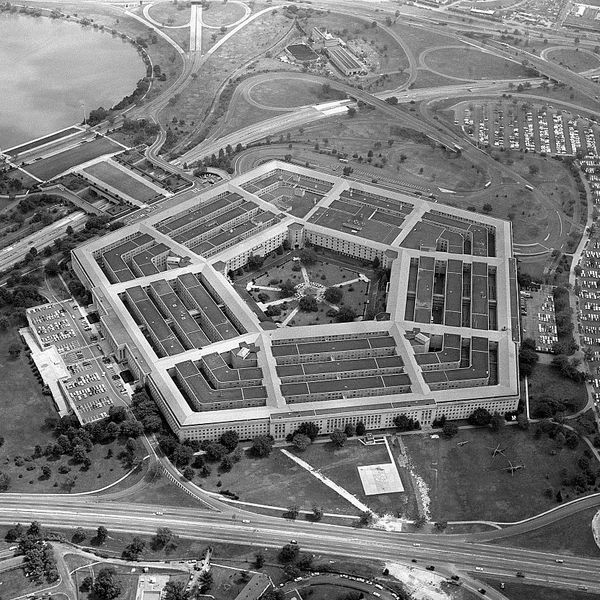OPINION — The U.S. Army is working on major changes in doctrine, organization and training “to develop a force that can effectively engage great-power competitors, such as Russia and China, across multiple domains, and expects this process to continue through the 2020s,” according to a Government Accountability Office report released last Thursday.
Much of the change is rooted in a December 2018 Army study titled, “The U.S. Army in Multi-Domain Operations 2028,” which was produced under Gen. Mark Milley, then Army Chief of Staff and now the incoming Chairman of the Joint Chiefs of Staff. It also had the support of then-Army Secretary Mark Esper, the new Defense Secretary.
That Army study, in contrast to President Trump’s view of both countries, saw Russia and China “contesting all domains, the electromagnetic spectrum (EMS), and the information environment” where “U.S. dominance is not assured.”
Perhaps more importantly, it found that, “China and Russia, have leveraged these trends to expand the battlefield in time (a blurred distinction between peace and war), in domains (space and cyberspace), and in geography (now extended into the Strategic Support Area, including the homeland) to create tactical, operational, and strategic stand-off.”
The Army study concluded that the U.S. is already “in a state of continuous competition [with] China and Russia [who] exploit the conditions of the operational environment to achieve their objectives without resorting to armed conflict by fracturing the U.S.’s alliances, partnerships, and resolve. They attempt to create stand-off through the integration of diplomatic and economic actions, unconventional and information warfare (social media, false narratives, cyber attacks), and the actual or threatened employment of conventional forces.”
As a result, according to the study, “near-peer states [meaning the U.S., Russia and China] more readily compete below armed conflict making deterrence more challenging.”
After decades of dealing primarily with counterinsurgency operations, the study found, U.S. forces are “still designed for operations in relatively uncontested environments that allow for sequential campaigns based on predictable approaches that assume air and naval supremacy.”
In addition, “the U.S. military, due to cultural, statutory, and policy reasons, has often remained reactive in competition below armed conflict,” the study found.
In this new environment, in order to deter actual armed conflict, the study found that the Army along with other U.S. joint forces will have to engage “across domains (including space and cyberspace), in the EMS, and in the information environment…to seize and sustain the initiative by deterring conflict on terms favorable to the U.S., defeating an adversary’s efforts to expand the competitive space below the threshold of conflict. “
If that fails, it calls for “setting the conditions to enable the Joint Force’s rapid transition to armed conflict.”
Missing from both the 2018 Army study and the GAO report is any reference to U.S. Cyber Command, which already has taken offensive action against Russian cyber activities. For example, it was Cyber Command during the 2018 congressional midterm elections that blocked Internet access to the Internet Research Agency in St. Petersburg, which had used social media to influence American voters both last year and during the 2016 presidential election.
A provision in the fiscal 2019 National Defense Authorization Act permitted clandestine cyber operations as a traditional military activity, allowing Cyber Command to begin to compete in information warfare that is already underway with Russia, China, Iran and other countries.
Gen. Paul M. Nakasone, Commander of U.S. Cyber Command and Director of the National Security Agency told Joint Forces Quarterly earlier this year, “In cyberspace it’s the use of cyber capabilities that is strategically consequential. The threat of using something in cyberspace is not as powerful as actually using it because that’s what our adversaries are doing to us.”
Nakasone went on, “We’ve learned that if we’re going to have an impact on an adversary, we have to persistently engage with that adversary, we have to understand that adversary, we have to be able to impose cumulative costs on that adversary, and we have to be able to understand where that adversary not only is, but also where he is going.”
It is on the battlefield side that the Army’s new multi-domain activities should be focused.
A 2017 joint Army-Marine Corps study had already pointed out that in contrast to counterinsurgency operations in Afghanistan, Iraq and Syria, “future U.S. forces will likely confront the sensor-rich militaries of peer states [Russia and China] that employ both massed and precision-guided munitions across the depth and breadth of highly-lethal battlefields. U.S. forces must anticipate being contested in all domains across a vastly extended area of operations by enemies that possess systems that match or exceed existing U.S. ground combat capabilities.”
A critical concern for future U.S. operations is the loss of presumptive air superiority resulting from adversary advancements. The difficulty in achieving air supremacy, or even localized air superiority, against sophisticated adversaries has significant implications under current operational constructs.
According to Army plans, the next version of its Army Operating Concept is to be set “by the fall of 2019 in order to incorporate multi-domain operations into all levels of Army leadership, training, and education by 2020,” according to the GAO report. “Maintaining this schedule is important to have a ready, lethal, and modern force for multi-domain operations by 2018” the report says.
To specifically deal with the new environment, “the Army is seeking to quickly create or design several new cyber and electronic warfare units in order to execute multi-domain operations,” according to the GAO study.
New Army elements, such as the recently activated 915th Cyber Warfare Support Battalion, based out of Fort Gordon, Georgia and Newly-formed Cyber, Electronic Warfare, and Space (ICEWS) units, will focus on multi-domain operations in the areas of intelligence, cyber, electronic warfare, and space, with one of the first activated in January 2019 at Fort Lewis, Washington.
According to the GAO, the Army has had problems staffing and equipping the new units. “As of the end of March 2019, the [915th] unit was understaffed by more than 80 percent as it filled 30 of 171 authorized positions for fiscal year 2019, according to an Army headquarters official.” With the ICEWS units, the GAO said risk assessments were needed “to refine the unit’s personnel, equipping and training program,” without which “the unit may be unable to provide the expected capabilities.”
Planning has brigade combat teams, the Army’s primary tactical unit with up to 4,700 soldiers, being adjusted to conduct operations in the cyber domain, including new platoons focused on electronic warfare.
Details have been limited regarding the 915th, but according to a March article on the Fifth Domain website, “the Army approved its growth in 2019 and that it would serve Army-specific missions, not U.S. Cyber Command joint missions. It will be used to integrate intelligence, cyber, electronic warfare, signals, information operations and fires into one formation, while also able to deliver effects remotely and through local expeditionary cyber teams that will plug into the cyber and electromagnetic activities (CEMA) sections located in each brigade planning cell.”
Imagine in the future a brigade combat team readying an assault on a small town held by the enemy during wartime. It will be the CEMA staff that recommends knocking out Wi-Fi connections in the town to prevent residents and forces from communicating prior to or during the operation.
A year ago, Col. Robert E. Lee Magee, who leads the 3rd Armored Brigade Combat Team, told Fifth Domain, “I want access to those teams as a brigade commander. It’s how do we leverage that for all of our operations in the future,” Magee said. “What [the cyber teams are] really doing for me right now is they’re actually hacking some of the systems that are out here and allowing me to get eyes into places I normally wouldn’t be able to get eyes.”
The Army is on its way to giving Magee and other commanders the teams they need that can do much more than just hack.
Read more Fine Print from Walter Pincus in The Cipher Brief














